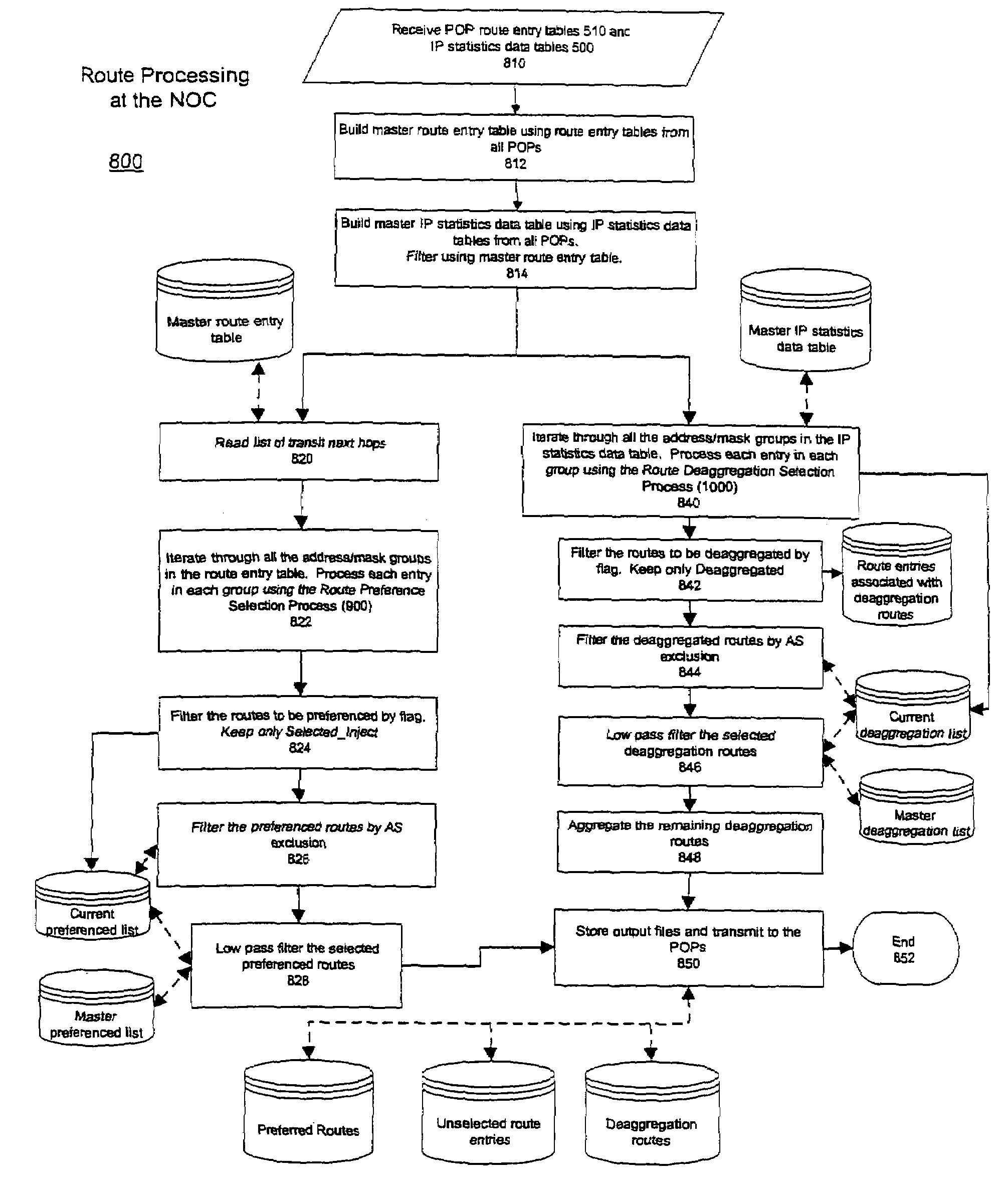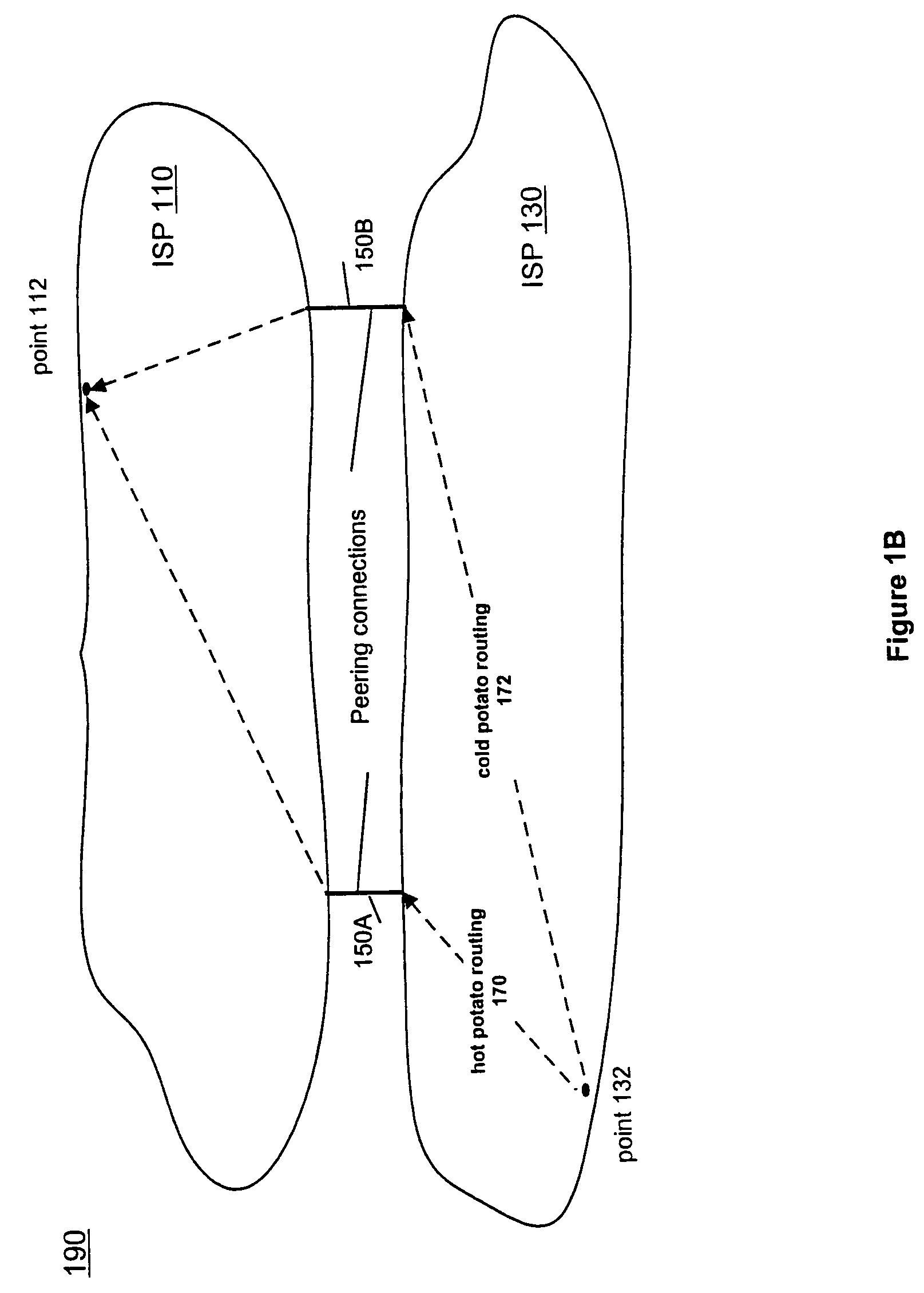Internet route deaggregation and route selection preferencing
a network route and routing technology, applied in the field of network routing, can solve the problems of unbalanced bandwidth, no incentive for a carrier to transport additional bandwidth, and inability to meet the needs of exchange information traffic (bandwidth) freely and without charge, so as to avoid inefficient routing and improve the accuracy of the address space map
- Summary
- Abstract
- Description
- Claims
- Application Information
AI Technical Summary
Benefits of technology
Problems solved by technology
Method used
Image
Examples
Embodiment Construction
[0038]Reference will now be made in detail to several embodiments of the present invention, examples of which are illustrated in the accompanying drawings. Wherever practicable, the same reference numbers will be used throughout the drawings to refer to the same or like parts.
[0039]Introduction
[0040]FIG. 1A provides background information on existing systems for carrying Internet and Web traffic. FIG. 1A shows a communications network 100. Network 100 includes three Internet Service Providers (ISPs) 110, 120, and 130 and a representation of the Internet 140. ISP 110 includes a point 112; ISP 120 includes a point 122; ISP 130 includes a point 132; and the Internet 140 includes a point 142. Each point represents a particular Internet Protocol (IP) address within the network 100. Each ISP represents a set of equipment and telecommunication lines providing Internet access for a certain geographic region. An ISP provides an Internet connection to various individuals and companies, wherei...
PUM
 Login to View More
Login to View More Abstract
Description
Claims
Application Information
 Login to View More
Login to View More - R&D
- Intellectual Property
- Life Sciences
- Materials
- Tech Scout
- Unparalleled Data Quality
- Higher Quality Content
- 60% Fewer Hallucinations
Browse by: Latest US Patents, China's latest patents, Technical Efficacy Thesaurus, Application Domain, Technology Topic, Popular Technical Reports.
© 2025 PatSnap. All rights reserved.Legal|Privacy policy|Modern Slavery Act Transparency Statement|Sitemap|About US| Contact US: help@patsnap.com



